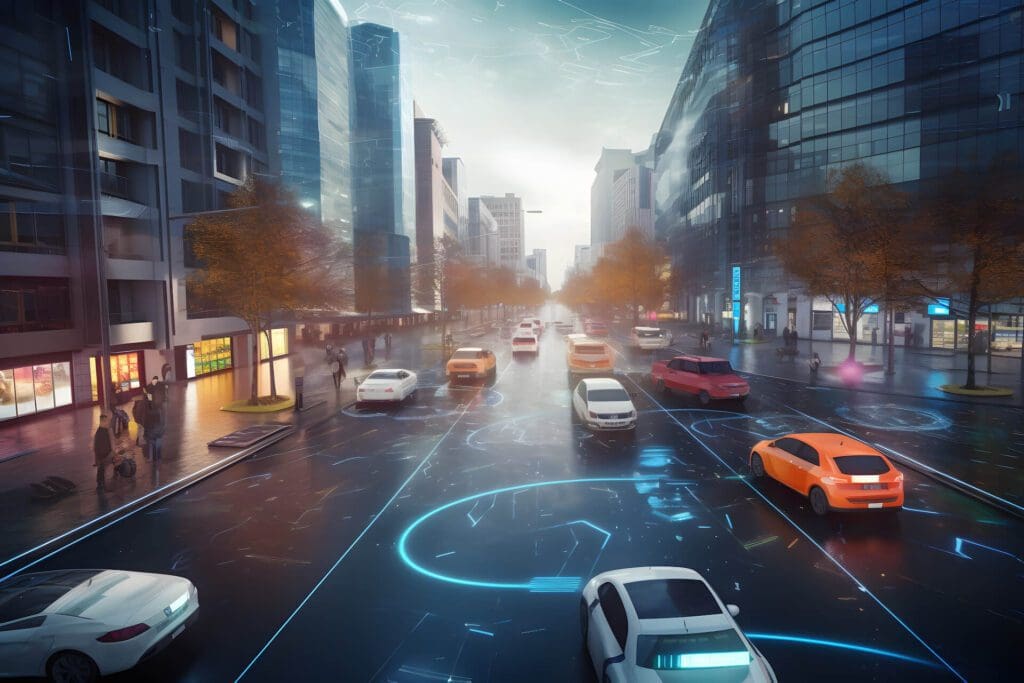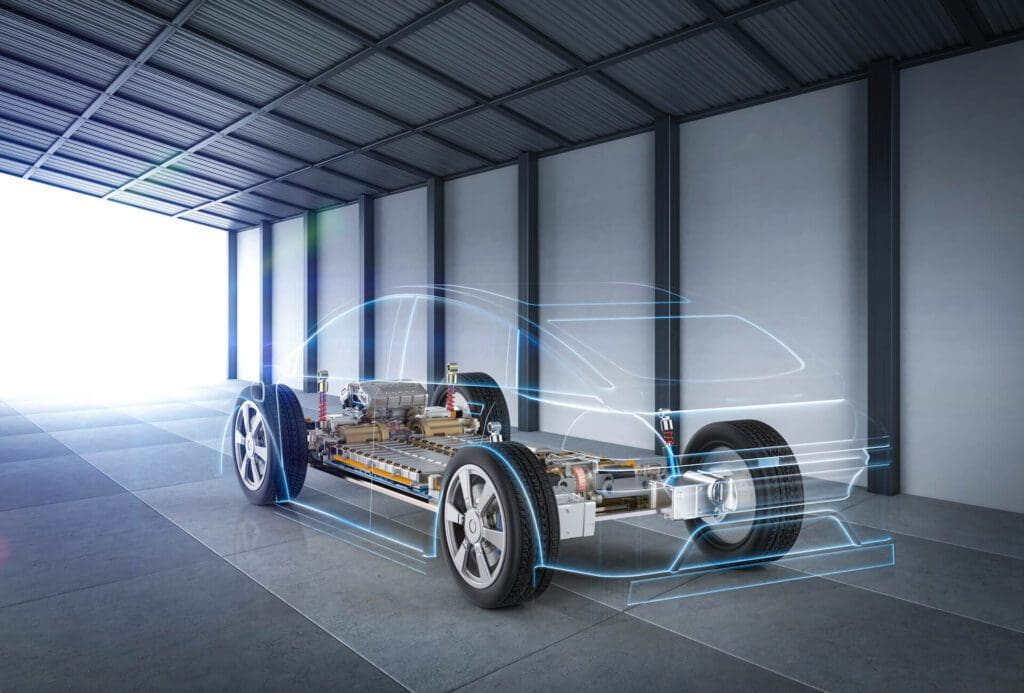Smart cities continue to expand and transform how we live our daily lives. By definition, smart cities are cities that use sensors to collect data about or from people to improve the quality of life and promote financial growth. However, a smart city is only effective in how these technologies are used, not how much of it is implemented.
Urban logistics is defined as the process of transporting goods in urban areas. This transportation can occur both in a city district and through retail. The development of smart cities offers numerous opportunities to advance supply chain efficiency while revolutionizing urban logistics. Our team at Next Exit Logistics has been working diligently to incorporate these new technologies in every part of our business.
Understanding Smart Cities and Urban Logistics
Improvements in transportation, primarily route optimization, have greatly impacted the development of smart cities. When a society has specific needs, gathering data from its citizens and adapting the method of transportation can address these needs more efficiently. Making other adjustments to both the types of vehicles used to deliver goods, as well as their navigation paths, can greatly benefit local residents and satisfy their needs.
However, traditional urban logistics come with their own set of challenges that we’re still working to understand today. There are plenty of technical challenges to consider regarding smart cities and urban logistics, such as their environmental impact and safety concerns. For example, smart cities gather data from citizens in order to better understand their needs, but this must be done in an ethical way that doesn’t put people in danger. Also, as transportation evolves, maintaining air quality and improving transport congestion are challenges to consider. There must also be enough space for transportation vehicles to load and unload, and you also have to address noise or vibration concerns depending on the location.
The Impact of Smart Cities on Urban Logistics
Urban logistics have changed considerably as a result of technological advancements incorporated into smart cities.
Integration of IoT and Data Analytics
The Internet of Things (IoT) is a collective network of connected devices that transmit data to and from all devices. These devices can include phones, cars, appliances, or sensors. When this data is collected, it gets stored on a cloud so improvements can be made to the lives of citizens as well as the economic status. IoT devices typically use edge computing, which prioritizes the most relevant data that are sent across the network. Also, most smart cities implement a security system to manage what data is sent over the network and prevent unauthorized access.
IoT has been immensely beneficial for data analytics, which looks at various data and determines what adjustments should be made. Because this data is sent in real time and can be accessed quickly, people can make current and informed decisions on what’s working and what needs to be improved. For example, you can track what goods are common among the citizens and use this information to improve the transportation of said goods. IoT and data analytics in urban logistics have strengthened smart cities and allowed for more streamlined processes.
Intelligent Transportation Systems
Intelligent transportation systems (ITS) are designed to improve the safety, efficiency, and mobility of vehicles. ITS is part of the IoT model, and it includes several different applications meant for different purposes. For instance, this system can process information related to traffic management, congestion, and environmental impact and send it across the network with the goal of enhancing transportation.
Advanced Warehouse Management
Advanced warehouse management is essential in manufacturing and distributing goods. This system can better manage your inventory, as well as how and where it ships. With the implementation of these systems, you’re less likely to create errors and send goods to the wrong location. Robotics and artificial intelligence (AI) have recently been implemented in these warehouses in order to mitigate human error and perform mundane tasks more easily. Rather than take time to sort your own inventory and financial records, advanced warehouse management can lower risk and improve these processes.
Last-Mile Delivery Innovations
Last-mile delivery innovations in smart cities include the use of smart lockers, delivery hubs, and more to improve how goods are delivered to customers. Last-mile delivery refers to the last step of the delivery process from a warehouse to the residential or business area. This step is challenging because of the struggle of navigating complex residential areas and delivering packages to the right houses and facilities.
Robots have also been implemented to make this step of the delivery process simpler. Robots and drones can be programmed to navigate the local neighborhood and safely deliver packages, lower the risk of a human driver getting injured, as well as streamline the process. Drones still need additional testing to ensure they’re a safe alternative and that they’re accurate, but drones and robots have shown promise in this field.
Opportunities for Improving Supply Chain Efficiency
Supply chain efficiency in smart cities has continued to be analyzed for the past several years, and there may be chances for this to expand and upgrade various aspects of the supply chain process.
Real-Time Inventory Tracking
Real-time inventory tracking can help businesses stay on top of their inventory and keep track of its location. Using radio frequency identification (RFID), businesses can load a tag with data and attribute it to an asset. Then, any RFID reader can capture the data and keep track of where the asset is in real time. This also promotes better accuracy of inventory and keeps your assets visible.
Efficient Route Planning
Where trucks navigate when delivering goods is essential for both the city and its citizens, but trucking logistics is difficult.. By taking the most reliable and eco-friendly path possible, you prevent both minor and major issues from arising, ranging from vehicle accidents to incorrect delivery. GPS devices have existed for nearly two decades, and advancements continue to be implemented daily. Not only do you prevent accidents and reduce the time it takes to deliver goods, but you also reduce your carbon footprint and lower your fuel consumption.
Demand-Responsive Logistics
Should someone need transportation at the earliest opportunity, they can utilize demand-responsive logistics if they live in a smart city. For instance, if a passenger needs a ride to a specific location, these systems can determine the best method of transportation, as well as who can accomplish this quickly. These systems can also be effective for businesses looking to fulfill orders reliably and swiftly.
Challenges and Considerations in Implementing Smart City Logistics
While smart cities and urban logistics come with plenty of advantages, there are drawbacks that businesses and individuals should consider.
Privacy and Data Security Concerns
Smart cities may analyze your data frequently, but this must be done safely and ethically. If your data gets into the wrong hands, this can result in a slew of concerns and legal issues. It’s important to keep in mind that smart cities are using your data to make quality-of-life and economic changes. Many businesses have incorporated cybersecurity measures in smart cities to keep their data safe from criminals and outside sources.
Infrastructure and Investment Requirements
Modern technologies don’t work without the proper infrastructure or investment. There may be old infrastructure that may be tempting to keep, as making upgrades can be expensive and require plenty of effort to properly install. However, if old technology is proving to be ineffective, it most likely is worth it to upgrade to new technology versus maintaining older and less reliable technology.
Also, the public and private sectors must agree on where their funding goes, which can be a setback if there are conflicts over what should be upgraded or implemented. For example, if they disagree over the use of AI in warehouses, this cannot be incorporated into businesses until circumstances change. While the benefits of smart cities cannot be ignored, some individuals don’t fully understand the impact these can have.
Contact Next Exit Logistics Today
The impact of smart cities and urban logistics has reformed how we navigate our daily lives. Human error has been reduced, allowing for a more streamlined process of organizing inventory and delivering goods. Transportation itself has also improved efficiency and the environment. There are potential opportunities in the future for technological advancements to further simplify transportation and organization, and our team at Next Exit Logistics is keeping a close watch.
We’re committed to following trends and keeping customers and freight workers satisfied. For assistance with shipping services or trucking logistics, contact our team today.
FAQs
What Are Smart Cities, and How Do They Relate to Urban Logistics?
Smart cities are cities that use sensors to gather information from local citizens and determine how to improve the quality of life and finances of the city. For example, if citizens consistently use a certain good, this information gets shared so businesses can adequately deliver these goods in a reliable way.
What Are the Benefits of Using IoT and Data Analytics in Urban Logistics?
Using IoT allows information to be transferred across a network immediately. This information is timely and can be used to make adjustments to navigation routes, the delivery process, and more. Data analysis can typically be a lengthy process and is subject to human error, but IoT simplifies this process and helps businesses better understand their city.
How Can Last-Mile Delivery Be Improved in Smart Cities?
Last-mile delivery allows robots and drones to complete the most difficult step of the delivery process, which involves having them navigate complicated neighborhoods to deliver packages. However, these machines can only carry so much inventory, and consolidating packages or loads in distribution centers may help simplify other aspects of last-mile delivery.




